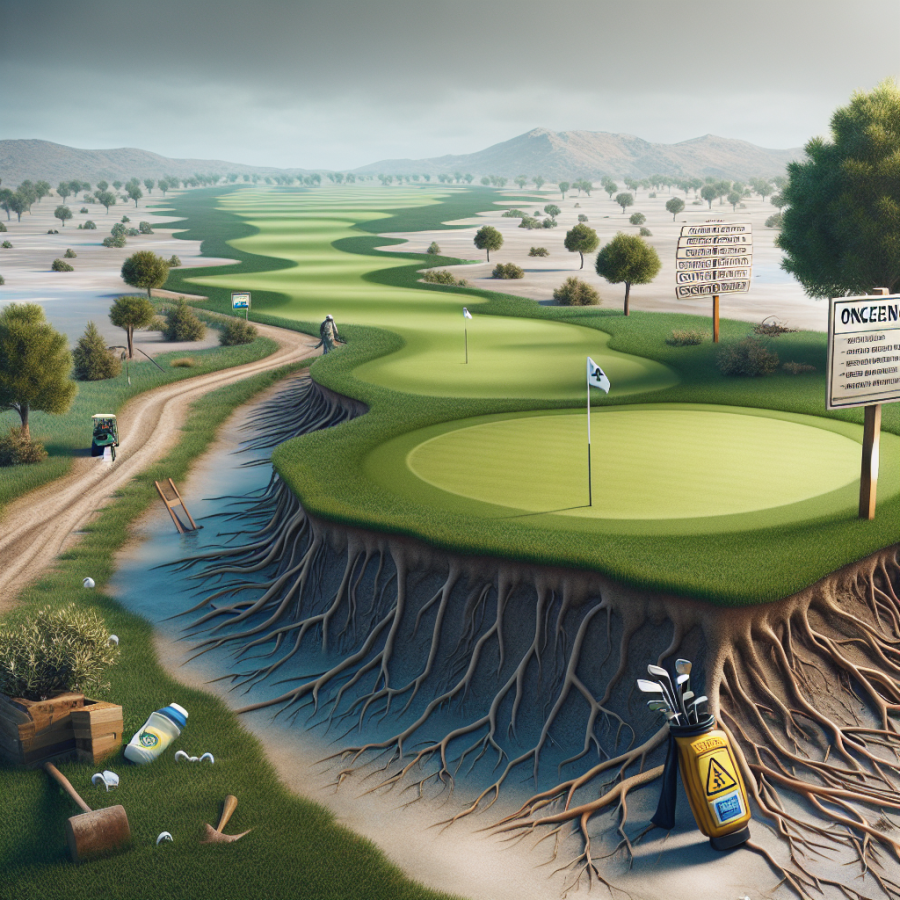Unseen Consequences: The Ecological Damage from Golf Courses
Golf courses have often been revered as landscape wonders of sorts; manicured fields as far as the eyes can see, dotted with picturesque water bodies and lush vegetations. However, the hidden environmental harm they wreak has been largely ignored until recently.
One of the primary unseen environmental impacts of golf courses is their water consumption. This is particularly worrisome in areas experiencing water scarcity. Water is an essential resource not just for human activities but also for ecosystems to thrive. Golf courses, with their intensive irrigation regimen, contribute to the depletion of water resources. This increases the vulnerability of local ecosystems and diminishes the groundwater reserves that should ideally be maintained for dry seasons or drought situations.
Moreover, golf courses often require a high level of maintenance to keep their pristine look, including frequent mowing and the application of fertilizers, pesticides, and herbicides. These chemicals include nitrogen and phosphorus that, if not managed properly, can infiltrate the ground and enter the groundwater supply, potentially polluting wells and water bodies. The chemicals can also run off into streams, rivers, and lakes, causing eutrophication. This is a process whereby a body of water becomes overly enriched with minerals and nutrients, leading to excessive growth of plants and algae. As they die and decompose, it depletes the water of oxygen, which can have severe effects on other aquatic life, leading to their death.
Maintaining the typically non-native grasses of golf courses further contributes to the loss of biodiversity. These non-native grasses often out-compete native plant species – a cycle which is often maintained by human intervention through the use of herbicides. Thus, golf courses can lead to a reduction in local flora diversity, which can have a domino effect, impacting local fauna as well. For instance, insects that rely on native plant species for survival may decrease in population, which could subsequently impact bird species that feed on those insects.
In addition, the construction and broadening of golf courses involve extensive earthmoving and deforestation activities. These activities destroy habitats, and disrupt migration routes and patterns. The loss of trees further contributes to increased carbon dioxide in the atmosphere as trees act as carbon sequesters. Fewer trees mean less carbon dioxide is absorbed from the atmosphere, accelerating climate change.
Golf courses also contribute to light pollution, which may not immediately come to mind when considering their environmental impact..
Read also:
Discover the Inventors: A Deep Dive into the History of Golf
Beyond the Green: The Pollution Problem of Golf Courses
Golf is a sport with a gigantic worldwide following, with millions of players and fans spread globally. Golf courses are known for their pristine, lush greenery, immaculate turfs, and dramatic settings. But as stunning as these venues may appear, they hide a more sinister reality, the significant negative environmental impact they impose. This issue merits significant scrutiny and attention.
Golf courses are inherently ravenous consumers of water resources. Maintaining the impeccable fairways and greens requires an unceasing supply of water, which tends to run scarce in various regions worldwide. In drought-stricken areas, the situation is even direr; setting up a golf course is tantamount to neglecting the urgent need for water conservation.
Pesticides and fertilizers are a familiar tale in golf course landscaping, used to keep the vast swathes of grass and plants in perfect health. However, these chemicals can easily seep into the soil and water, leading to pollution and threatening local biodiversity. The chemicals can affect not only the vegetation but also small animals and birds. Not only does this interfere with the local ecosystem balance, but it can also lead to bioaccumulation and biomagnification in the food chain.
Apart from the water consumption and chemical contamination, golf courses also contribute to deforestation and habitat loss. Building a new course often means cutting down forests, meaning homes for numerous creatures are lost. Besides, the intensive landscaping involved with a golf course can also lead to soil erosion, stripping the land of its natural vegetation and causing irreparable damage.
Furthermore, the pollution extends beyond just the physical aspect. Light and noise pollution are also prevalent issues regarding golf courses, especially those that operate into the night. The bright lights and noise inevitably disrupt the natural behaviour of wildlife in the area, causing disorientation and stress.
Many golf courses use gas-powered maintenance vehicles that emit greenhouse gases, thus contributing to global warming. Moreover, the long-distance travel of golfers to reach these courses also contributes significantly to carbon emissions.
A trend of establishing golf courses in ecologically sensitive areas such as wetlands, coastal sites, or deserts adds to the detrimental effects. These are fragile ecosystems that require protection, and establishing a golf course in such places usually leads to substantial, often irreversible damage.
While none of this is meant to vilify the sport itself, it’s crucial that we understand the full scope and scale of the pollution problem presented by golf courses.




